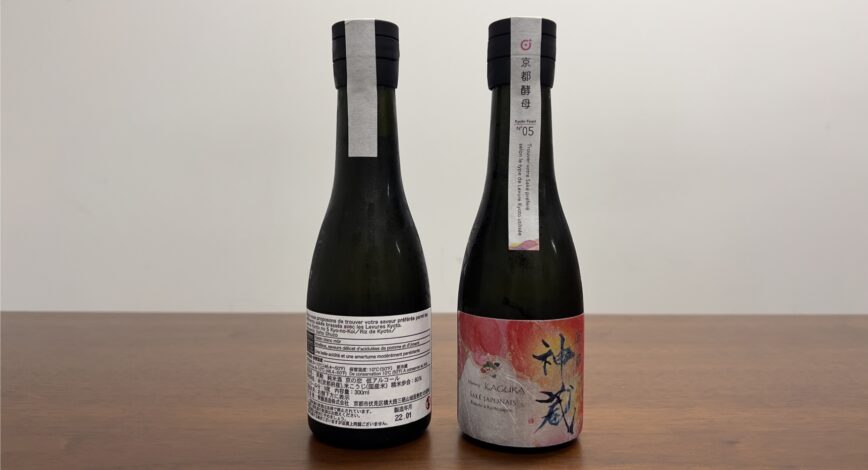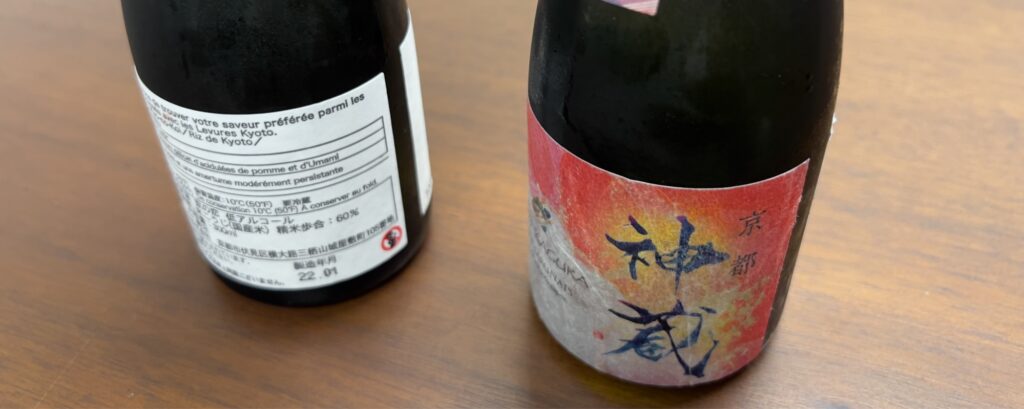
Trade
Sake labels and trading what is the information neccesary
Labels on Sake bottles contain much information on its identity. The labels surely include information required by law, but they are also used to deliver messages from the producers to consumers. Capturing messages from the labels will help you select a Sake bottle of your interest. Let us probe labels of Sake bottles!
Contents
Front labels and back labels

Front labels frequently indicate the name and production method of the Sake, in short, a core identity of Sake. It is often the case that front labels are carefully designed to attract the eyes of consumers, for they provide the first contact with consumers. In other words, the labels can become a critical element for consumers to decide whether they purchase the bottle or not. The appeals of labels are so critical that there are even collectors of different Sake labels.
Back labels, on the other hand, are dedicated to more practical information such as ingredients, degrees of alcohol, polishing ratio of rice, production date and the name of the producers etc.
Why are labels important?

The world of Sake, more precisely Nihonshu (日本酒), is dynamic. The flavours of Sake vary depending on ingredients (e.g. variety of rice, rice of different level of poshing, whether there is added brewer’s alcohol or not) as well as production methods deployed. They are categorized under the different types accordingly by law.
Labels are important as they describe the characteristics and categorization in the form of words, making it easier for the people to guess the flavours of the content.
These items should be notified on the labels:
- Name of item
- Ingredients
- Date of production
- Volume
- Level of alcohol
- Name of producer and the address of production site
- Precautions for storage and consumption
- Prohibition of alcohol consumption by minors
The following information is voluntarily given, for convenience
Polishing ratio
Polishing ration refers to the remaining ratio of rice after the polishing process. When the polishing ratio is smaller, we could expect that the more out layers are polished off. It is an indication that only the part close to the core is used. Sake made from highly polished rice tends to be reflect an authentic flavour of rice, without unpleasant flavours given by out layers.
Nishonshudo (日本酒度), Sake meter value
The measurement indicates the dryness and sweetness of Sake. The neutral point is set at 1.4, and it shows the dryness when the number is bigger than 1.4, while it indicates the sweetness when the number is smaller than 1.4.
Acidity level
The amount of succinic acid, citric acid, malic acid, and lactic acid is shown by acidity level. The neutral acidity level is between 1.4 and 1.6. When Nihonshudo, the Sake meter value, of 2 Sake is equal, Sake with higher acidity has a sharper and richer taste, while with lower acidity, it tastes lighter and sweeter.
Amino acidic level
Amino acidity is measured by amino acidic level. The average of amino acidic level of Sake is between 1.23 and 1.39. The higher the amino acidity is, the more richness and umami it expresses. The lower the number is, the clearer and the lighter the Sake becomes.
Labels in the destination languages

Those who have limited knowledge on Sake may still struggle in understanding the characteristics of it from the labels. To facilitate the explanation of Sake, the Japan Food Product Overseas Promotion Center (JFOODO) and the Japan Tax Agency made a guideline of the back labels in August 2019. The items to be indicated in the back labels are selected through a large-scale research to the experts and consumers overseas.
・ Items of high importance
- aroma and flavour
- taste
- recommended serving temperature
- storage temperature
- recommended accompanying food
- area of production
・Items of high interest
- story of the brewery
- Story of the product
・Items recommended to be included
- what is Sake, Nihonshu?
- Types in Specially Designated Sake
- Rice variety
- Appearance
- Suitable drinking occasions
- Rewards granted
The above items are recommended to be present in the labels under the guideline. However, this is only for advisory purposes and the layout and information appearing on labels can be adjusted according to the request and regulations of importing countries.
Potential risk concerning labels

There are no global standard for the labels and they need to be customized according to the regulations of each country / region. It is recommended to use Japanese standardized back labels for the products exported from Japan, however, detailed talks should be made with importers to remove the risks concerning the requirements for the labels. For instance, there are countries where it is mandatory to indicate “level of alcohol, “precautions against minors” as well as “over-consumption”
In addition, it is a norm that each country has specific regulations for the import of alcoholic beverages. Unless the documentation is complete, there appear to be issues concerning the customs. Even when the customs are cleared, there is also a risk that products cannot be vended with incomplete labels, which could result in a huge loss. Detailed research should be made to remove any risks regarding the administrative process.
To sum up, labels of Sake are the dedicated space to deliver important messages like artisan’s professionalism as well as the production methods and flavours. The labels are often simply designed to introduce the product to consumers outside Japan. Pay a little attention to the information written on the labels to help find your favourite tastes, otherwise pick a bottle with attractive messages from the producer!
ikki is looking for a partner who can post your knowledge or activity on our media. If you are interested please contact us through CONTACT page.







